Looking for a historic destination in the sunny Caribbean without need for a US Passport? Look no further than the beautiful Puerto Rico!
I recently had the chance to visit Old San Juan for the first time and found it to be an unforgettable experience – the capital of Puerto Rico is a city where history and culture intertwine in ways unlike anywhere else in the United States or its territories.
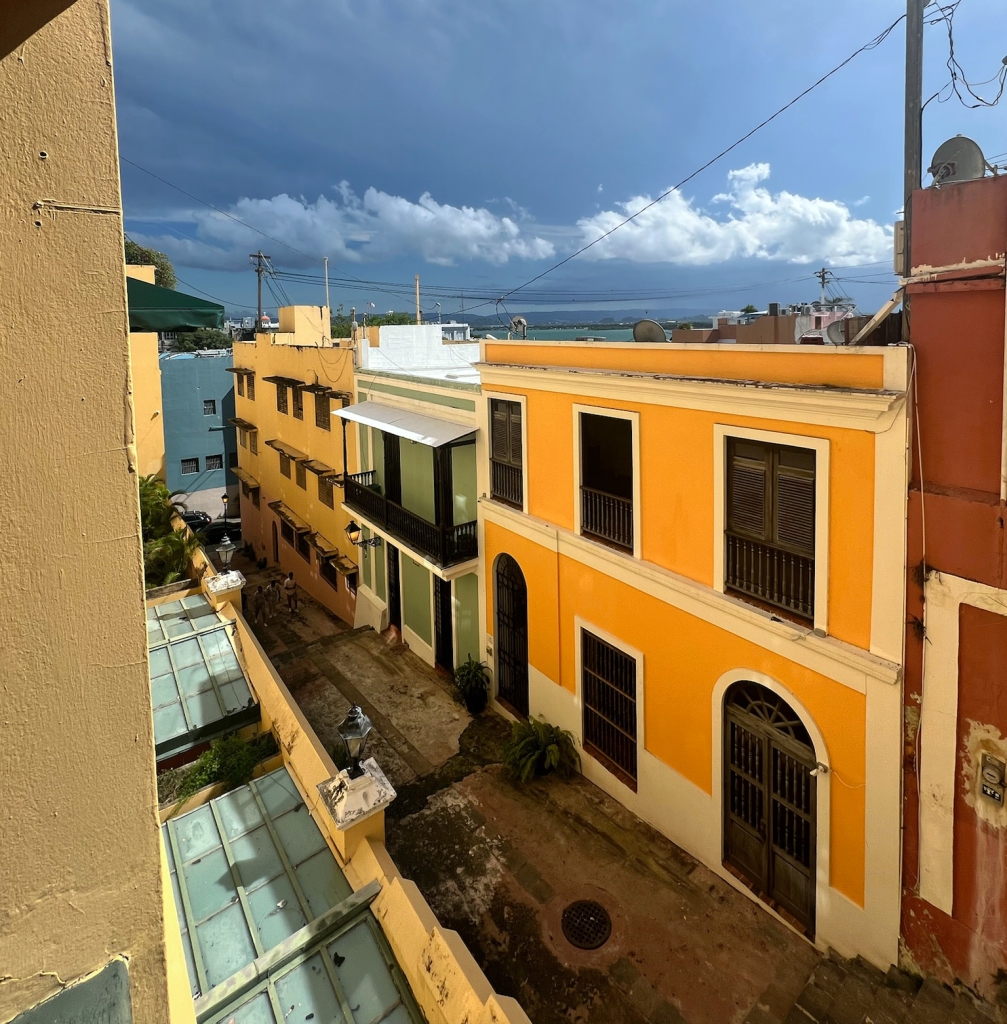
This island, a US Territory since the aftermath of the Spanish-American War in 1898, has a long and complex history of colonialism, conflict, cultural evolution, and devastating hurricanes, the most recent being Hurricane Maria in 2017.
During our recent visit, I explored some of San Juan’s most iconic landmarks, and I’m excited to share some of that history, including a surprising Pennsylvania connection (of course!).
Hotel El Convento
Our journey began at Hotel El Convento, a boutique hotel located in the heart of Old San Juan. This former convent, dating back to 1646, has been beautifully restored, offering a blend of historical charm and modern luxury.

Originally a Carmelite convent, it housed nuns for more than 250 years until the early 20th century. In 1962, it reopened as a hotel.
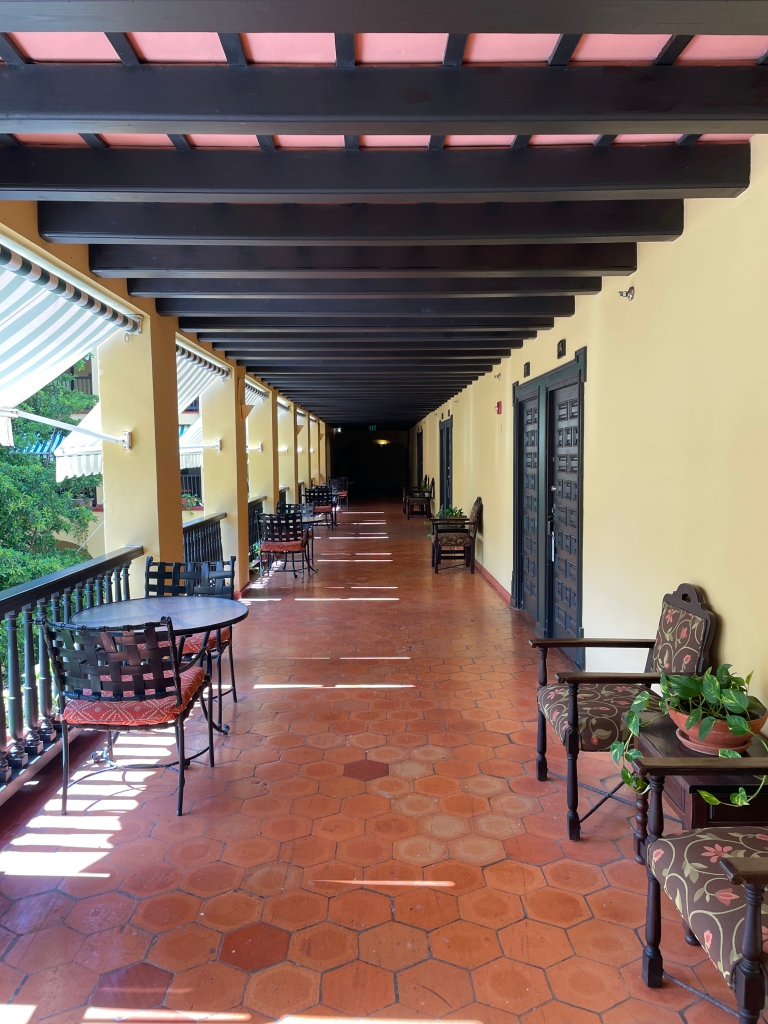
The hotel’s courtyard, with its lush vegetation and tranquil fountain, provides a serene escape from the bustling city streets. Sun shines into the courtyard and down the hallways leading to rooms. It also had an amazing rooftop pool with views looking out over San Juan Bay, one of the finest harbors in the Caribbean, the reason the Spanish established San Juan in 1521.
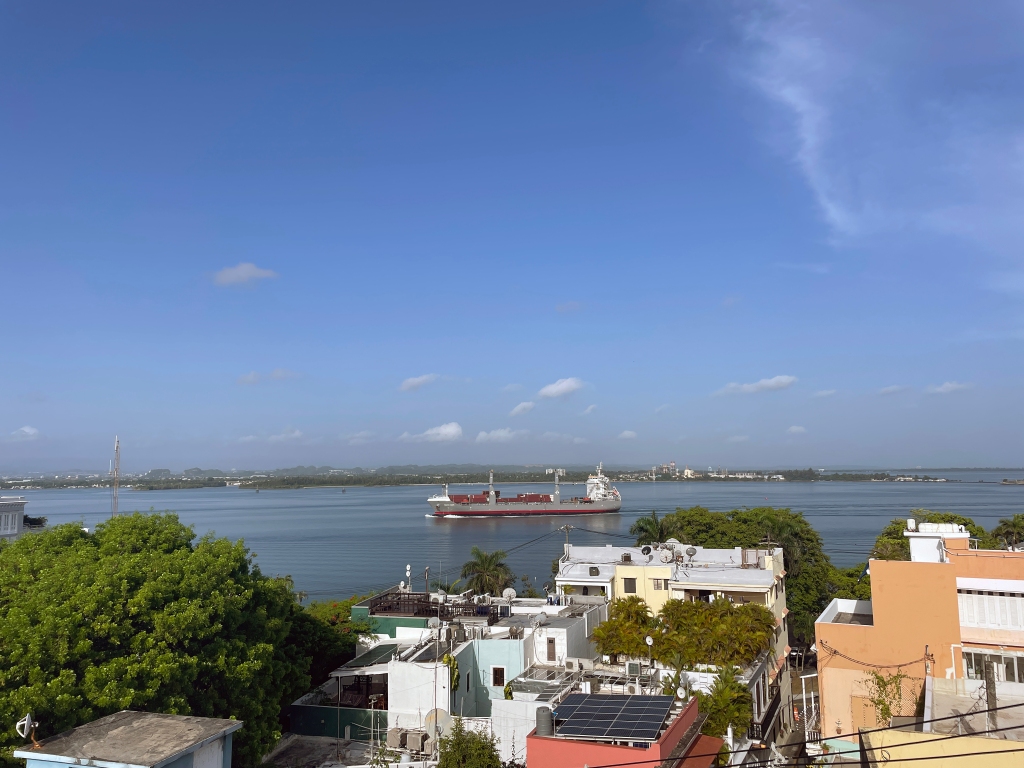
Catedral de San Juan Bautista
Just a stone’s throw from Hotel El Convento is the Catedral de San Juan Bautista, one of the oldest buildings in San Juan and the second oldest cathedral in the Americas. This example of Gothic architecture has been a place of worship since 1521 and holds significant historical and cultural importance.
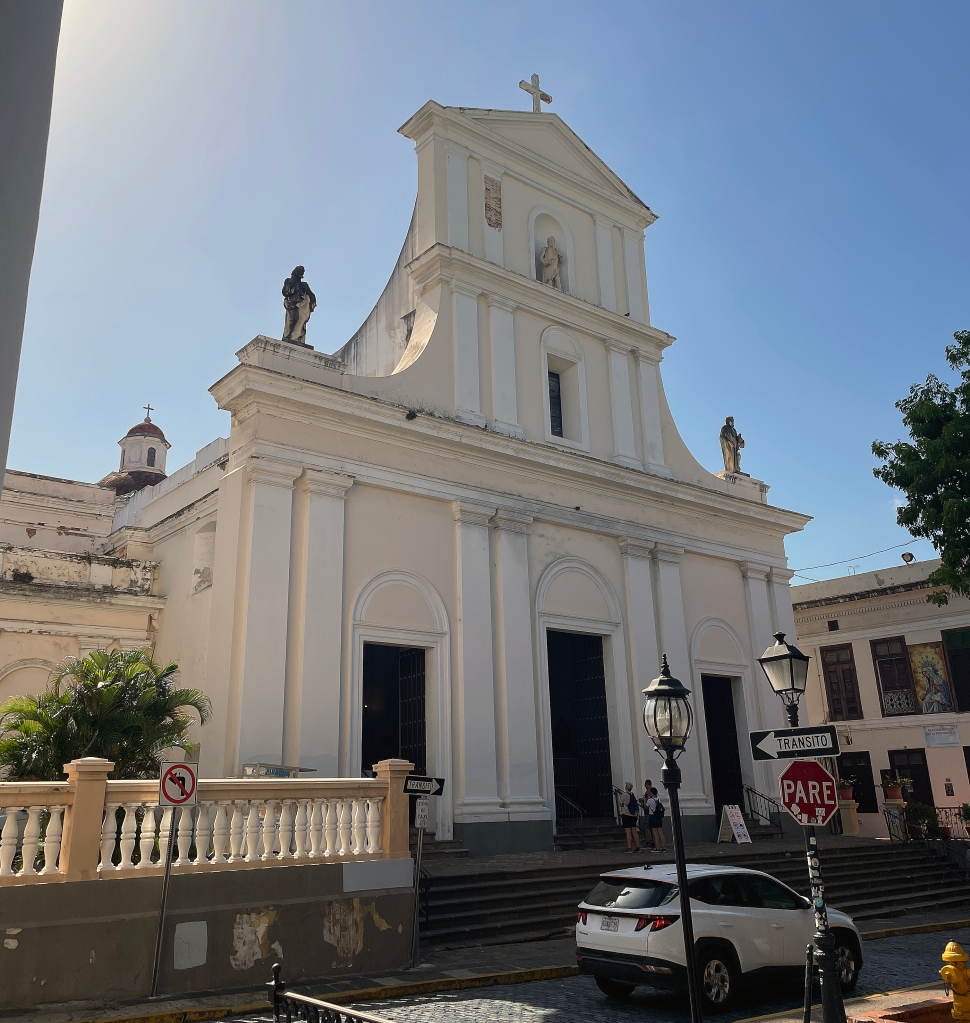
The cathedral’s history is intertwined with that of Puerto Rico. It has undergone several reconstructions due to hurricanes and attacks, but it has always risen anew. The current structure has roots back to 1540.
Inside, the cathedral is both awe-inspiring and peaceful. The vaulted ceilings, intricate stained glass windows, and the tomb of Juan Ponce de León, the famous Spanish explorer and first governor of Puerto Rico, make it a must-visit. We heard some great guitar music while we were inside.
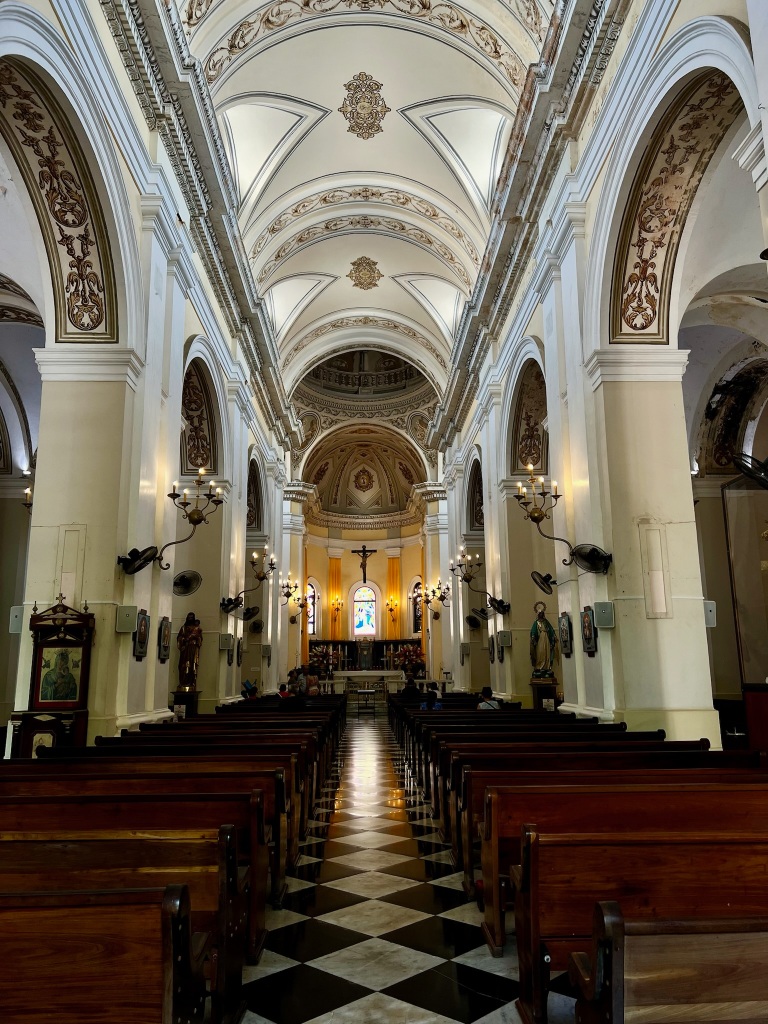
Whether you’re religious or not, the cathedral’s historical significance and architectural beauty leaves a lasting impression.
Castillo San Cristóbal
Our next visit took us to Castillo San Cristóbal, a monumental fortress that complements the nearby El Morro just a few miles west at the mouth of San Juan Bay. Today, the fort is maintained and interpreted by the National Park Service.
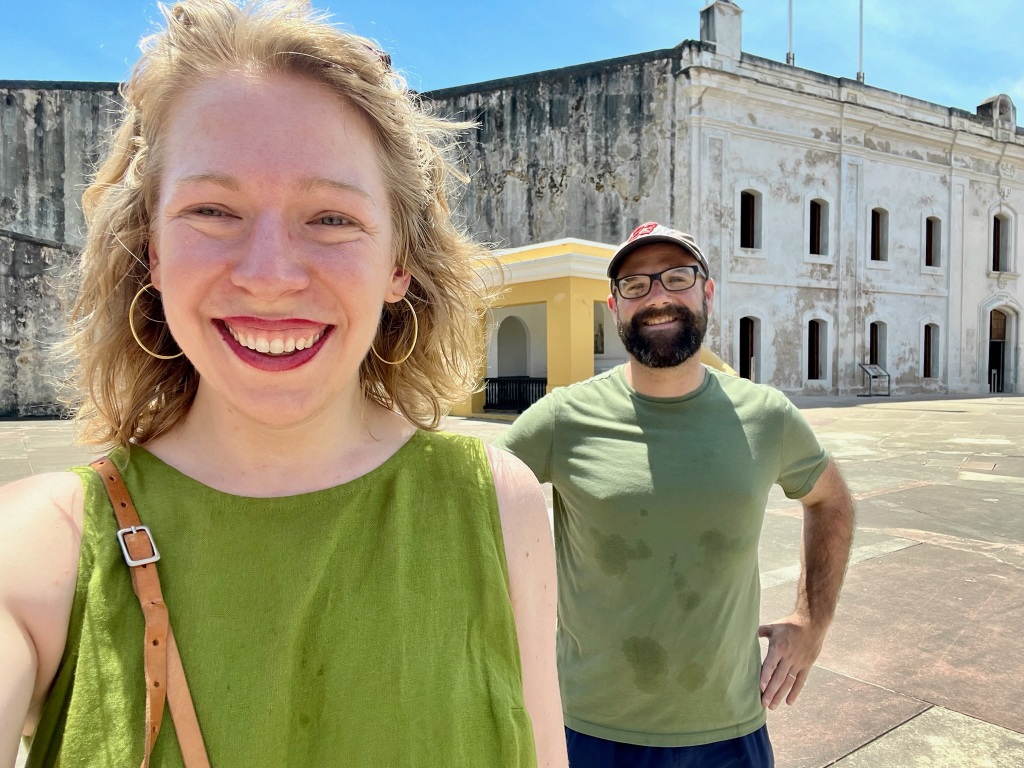
Built between 1634 and 1790, San Cristóbal is the largest fortification constructed by the Spanish in the New World. This massive structure was designed to protect San Juan from land-based attacks from the east and spans 27 acres with a sprawling complex of tunnels, barracks, and ramparts.
One of the highlights of San Cristóbal is its intricate system of tunnels, designed for both defense and escape. These tunnels were used by soldiers to move unseen and protect the fortress from underground attacks.
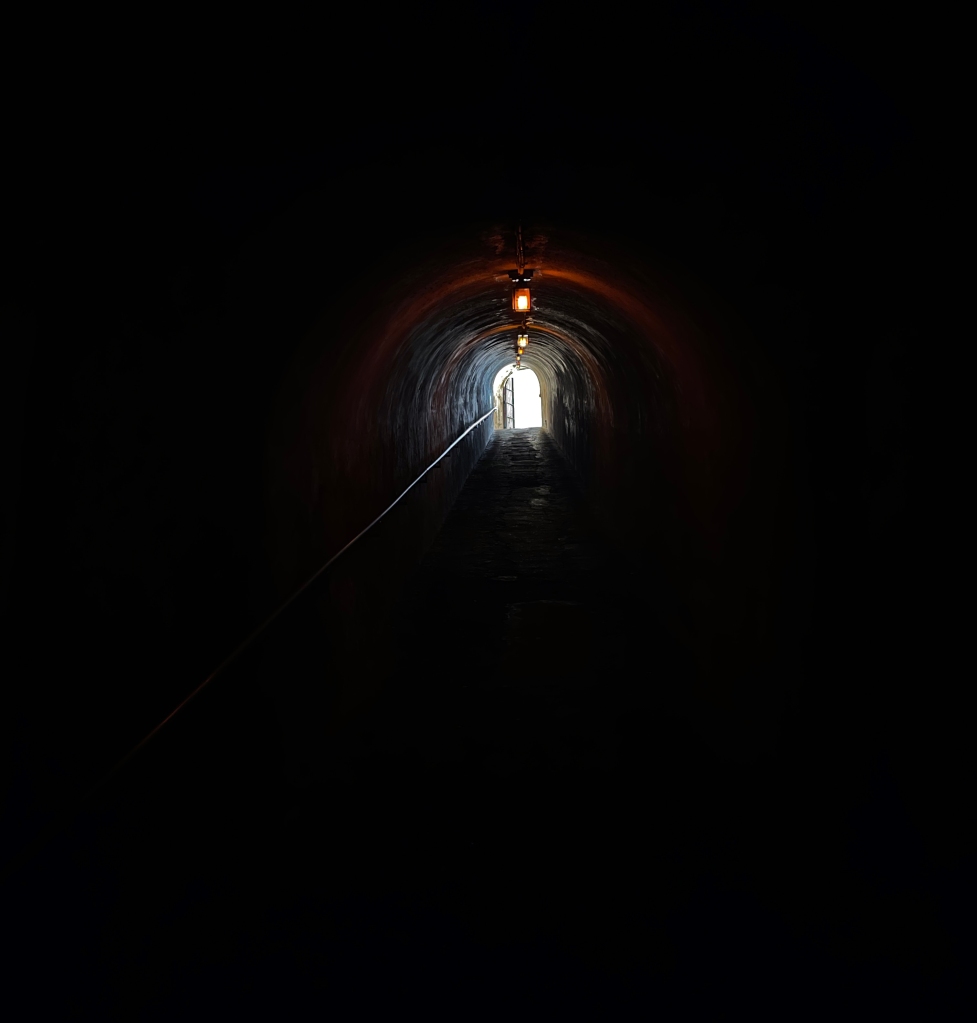
Walking through these dimly lit passages, you can imagine the soldiers who once traversed them, ready to defend San Juan from attacks that had come over the centuries.
The fort also offers stunning views of San Juan and the surrounding area, making it a perfect spot for photographers and history enthusiasts alike. You’ll find displays throughout the fort provide insights into the strategic importance of San Cristóbal and its role in the island’s defense.
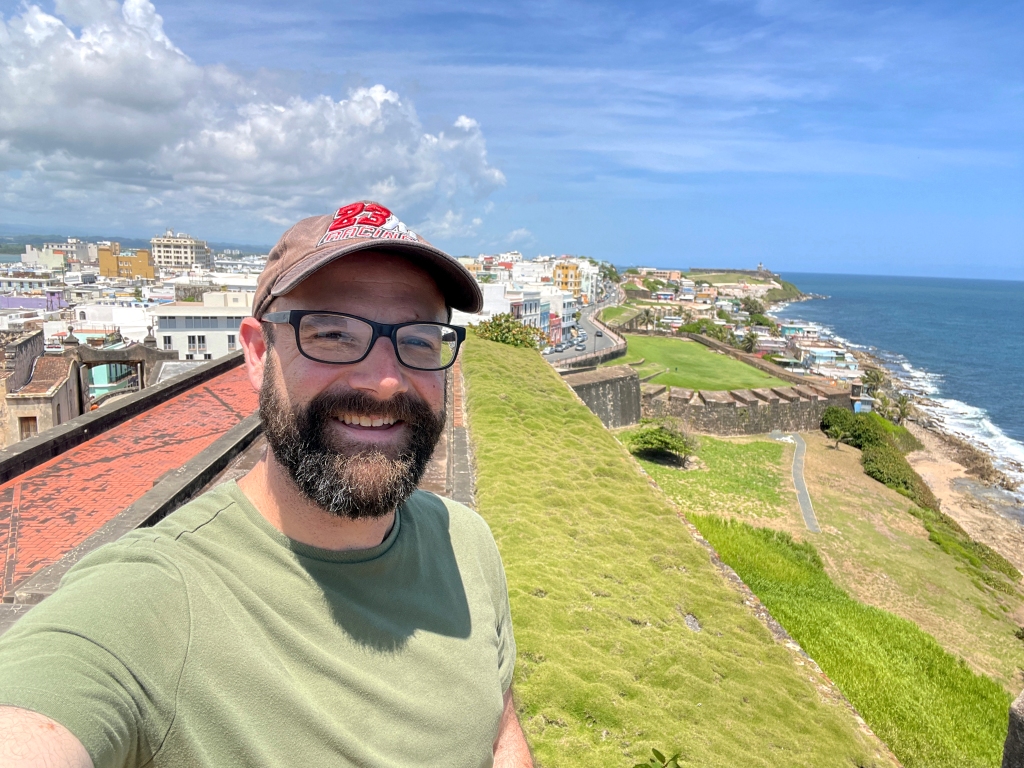
Walking Around Old San Juan
One of the greatest pleasures of visiting San Juan is simply strolling through the streets of Old San Juan. The city’s colorful colonial buildings, cobblestone streets, and vibrant plazas create a picturesque setting that feels very much like a living museum. Each corner you turn reveals a new piece of history, from ancient city walls to charming cafes and shops. We enjoyed sparkling Americanos at Cafe Caleta and some mojito flavored piraguas (alcoholic shaved ice!) at nearby Pira-Rum.
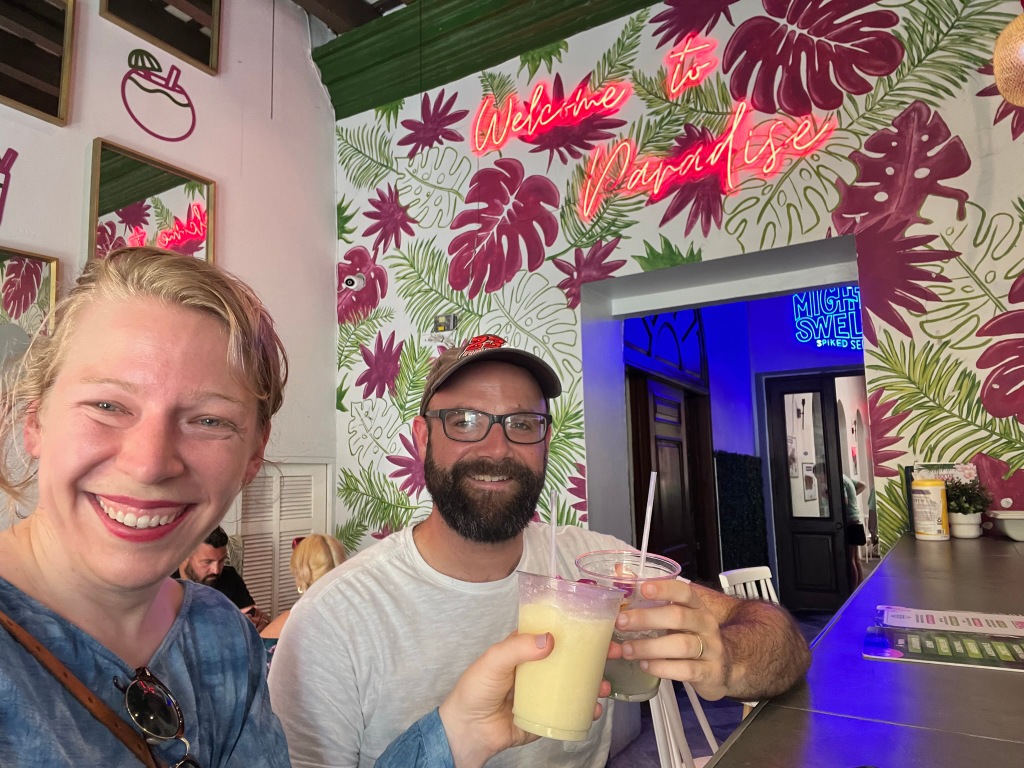
As you wander, take the time to explore the many hidden gems and historical markers scattered throughout the city. Enjoy a meal of mofongo, browse the unique boutiques, and soak in the lively atmosphere of this historic district – a blend of old and new, where centuries-old architecture houses modern businesses.
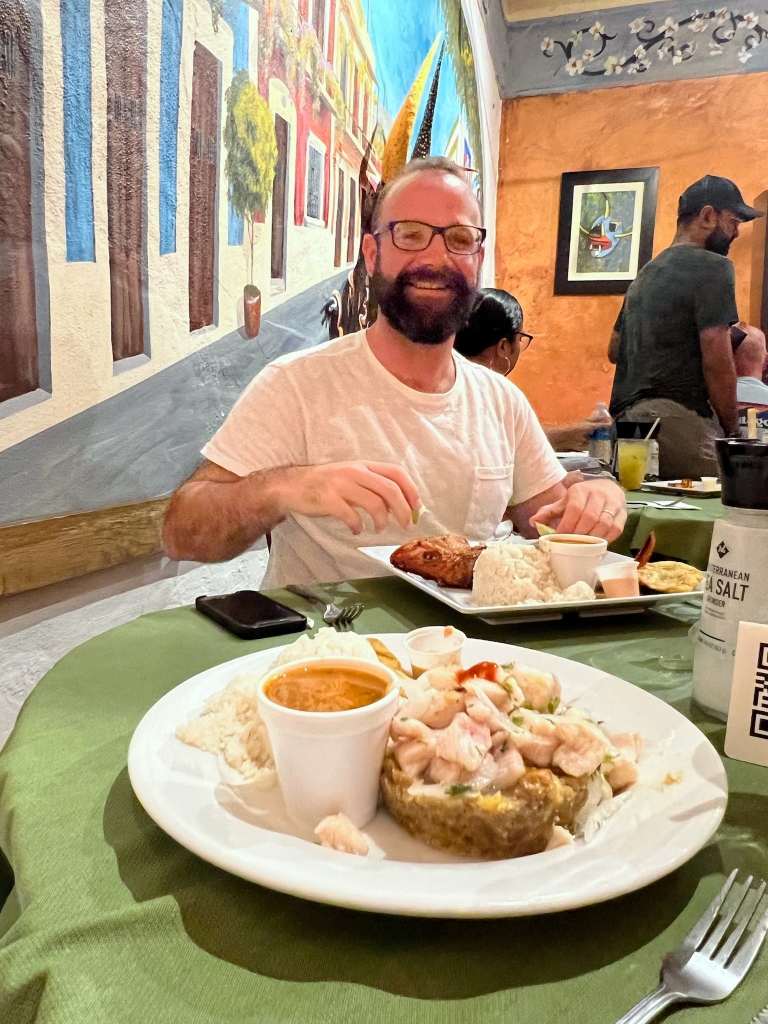
You’ll also find one of my favorite things about the neighborhood we stayed in – the friendly neighborhood cats. These were brought in, according to a local, to deal with rodent problems over the centuries in this port city, but have since become quite a bit more adept at lounging about the city’s numerous plazas.
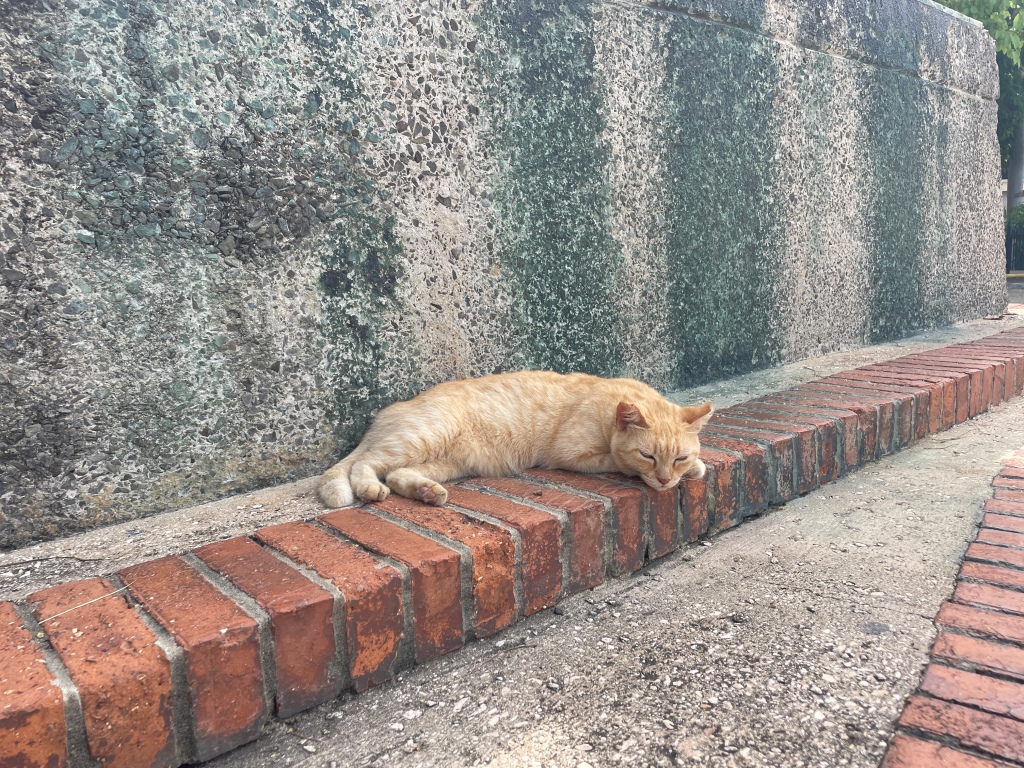
La Factoría
No visit to Old San Juan would be complete without a stop at La Factoría, a renowned cocktail bar set in a historic building dating back nearly to San Juan’s founding. La Factoría is famous for its creative cocktails and vibrant atmosphere, including a starring role in the music video for the 2017 pop sensation “Despacito.”
The bar’s rustic, vintage décor enhances the sense of stepping back in time while enjoying modern mixology at its finest. The bar is also a hub for live music, often featuring local artists, which adds to its charm and makes for a memorable evening in Old San Juan. Get the Spiced Old Fashioned – incredible.
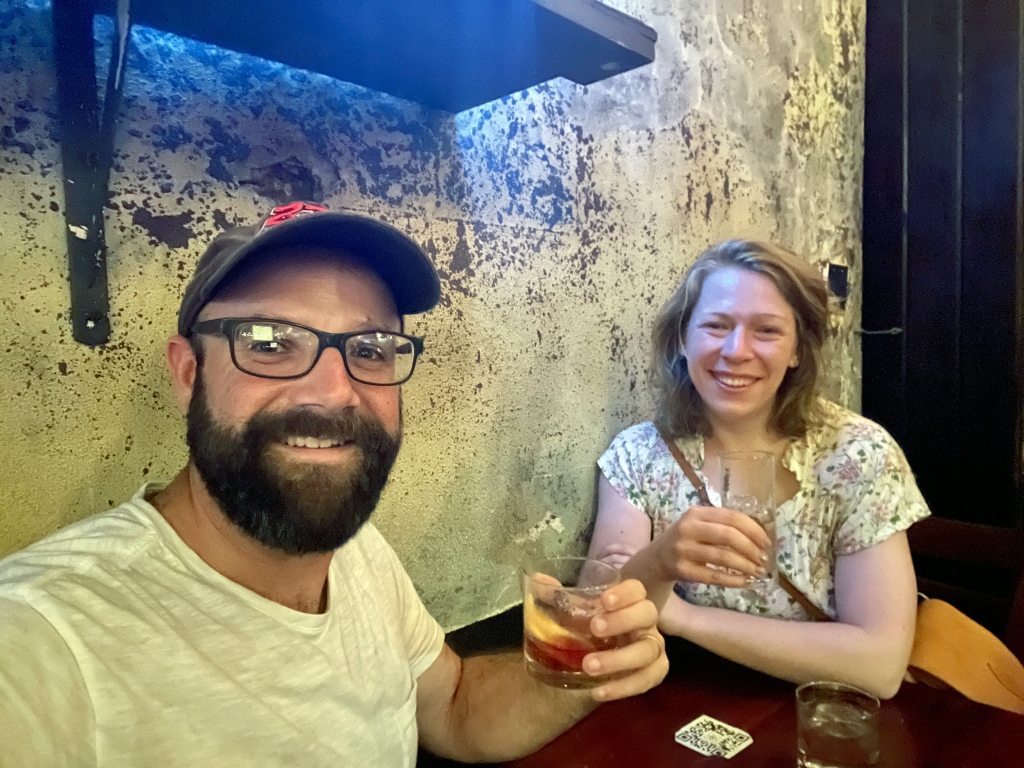
Castillo San Felipe del Morro
Finally, we ventured to the majestic Castillo San Felipe del Morro, commonly known as El Morro. This fortress, perched on the northwestern tip of San Juan, has stood guard over the city since 1539. Today, like Castillo San Cristóbal, it is maintained and managed by the National Park Service and is a UNESCO World Heritage Site.
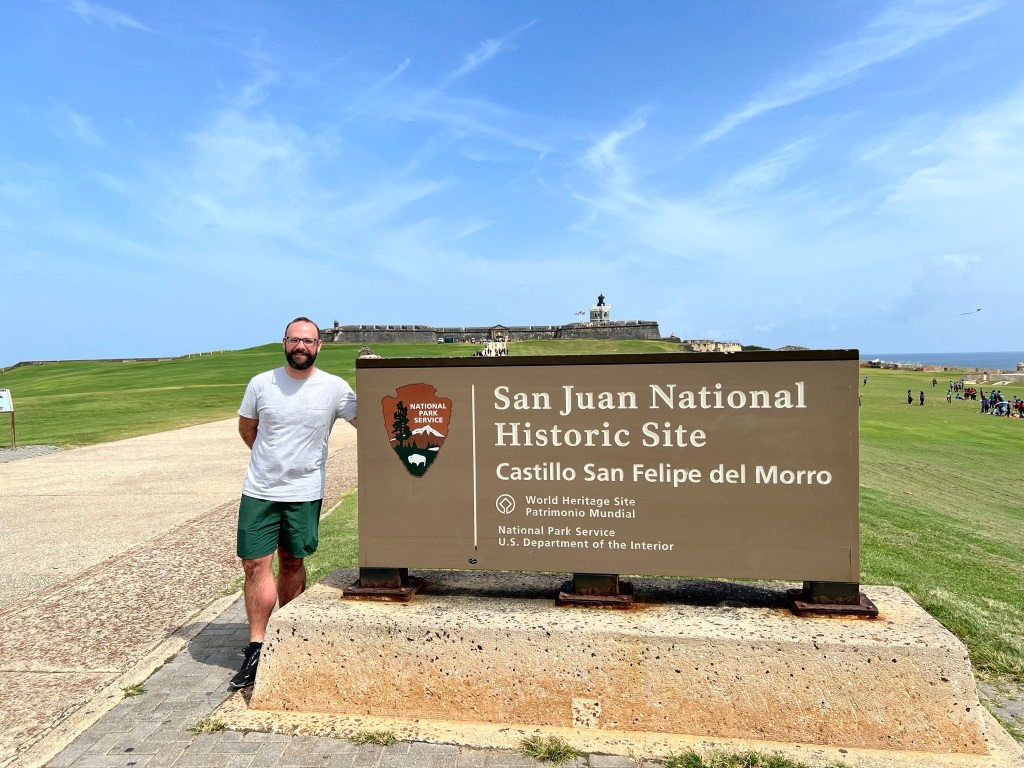
Constructed by Spanish settlers, El Morro was designed to protect the city and the anchorages at San Juan Bay from seaborne enemies. Over the centuries, it played a crucial role in defending San Juan against various invasions, including attacks by Sir Francis Drake and later the Dutch.
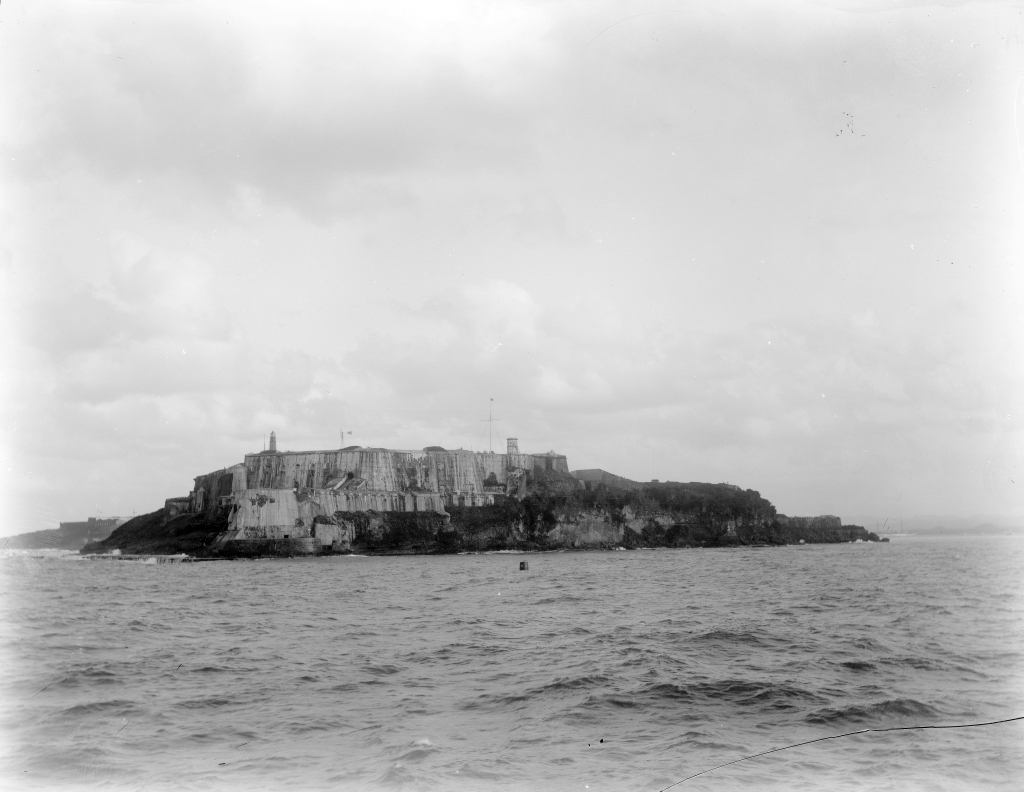
Notably, El Morro saw combat during the Spanish-American War in 1898, when it was bombarded by the US Navy, marking a pivotal moment in Puerto Rico’s transition from Spanish to American rule. We’ve previously shared a story about a Pennsylvania sailor who first saw naval combat during the bombardment of El Morro in May 1898. The fire from the US Navy destroyed the original lighthouse in the fortress.
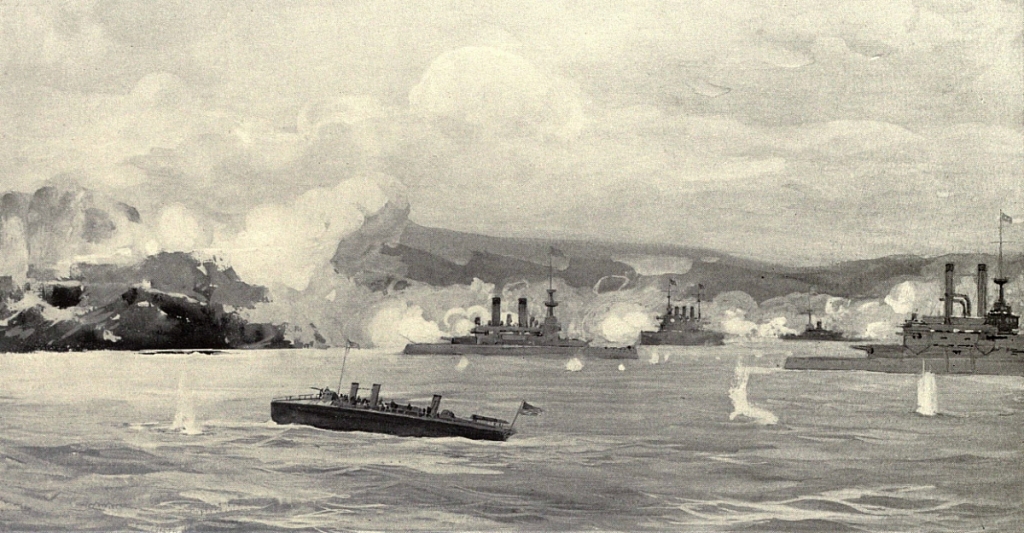
Walking through El Morro’s ancient stone walls, you can almost hear the echoes of the past—the clash of swords, the boom of cannons defending against pirates and foreign invaders. You can also feel the INSANE heat absorbed by the stone fort, making it one of the hottest places I’ve ever visited. I cannot imagine the horrors of being held within the fort as a prisoner.
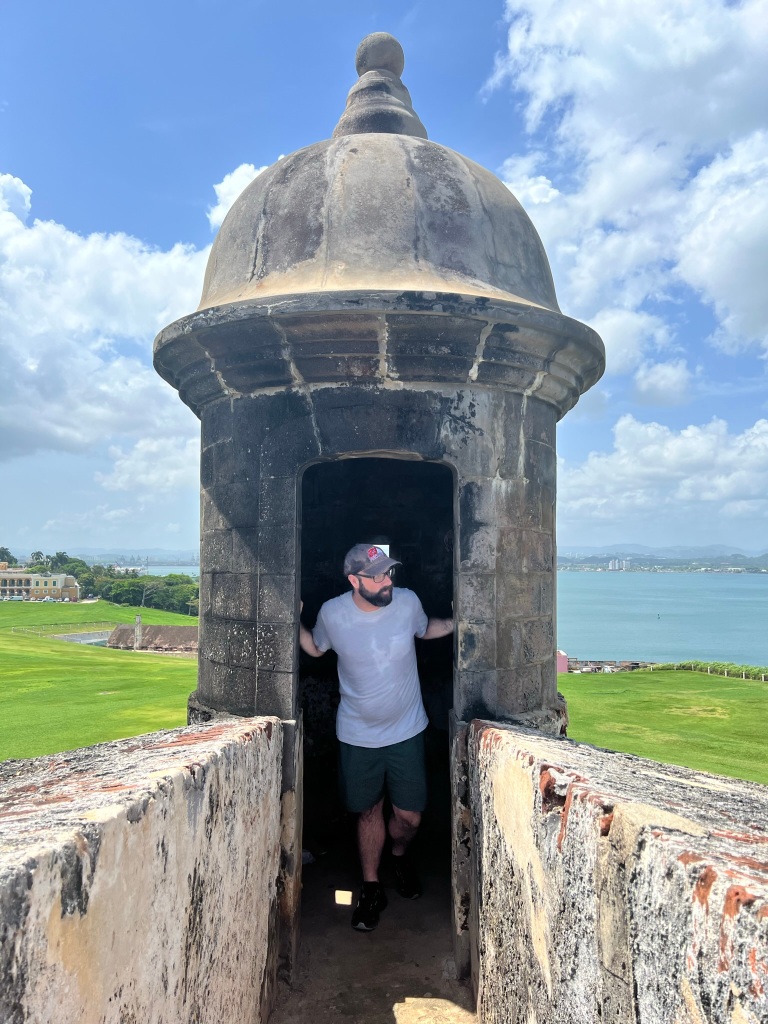
El Morro is a testament to Spanish military engineering, with its towering bastions and labyrinthine tunnels. The fort’s six levels include dungeons, storerooms, and living quarters, offering a glimpse into the lives of the soldiers who once garrisoned there. It also has decades of American military history – El Morro was known as Fort Brooke in the US Army and was maintained as a military garrison from 1898 to 1961.
The views from the ramparts are breathtaking, offering panoramic vistas of the Atlantic Ocean, the mouth of San Juan Bay, and the mountains in the distance to the south. As you explore, you’ll find informative exhibits detailing the fort’s history and the various sieges and attacks it withstood.
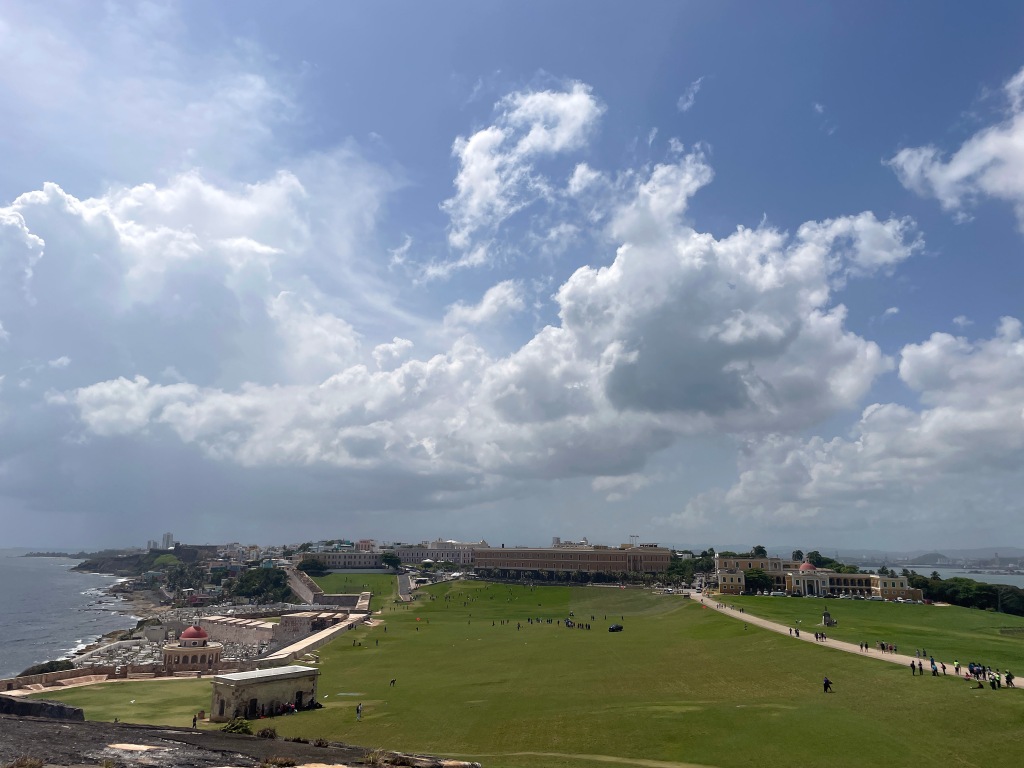
We flew out after four days in Old San Juan, but will definitely be returning soon to this treasure trove of history and culture.

Subscribe to the latest from Jake Wynn – Public Historian
Enter your email below to receive the newest stories.
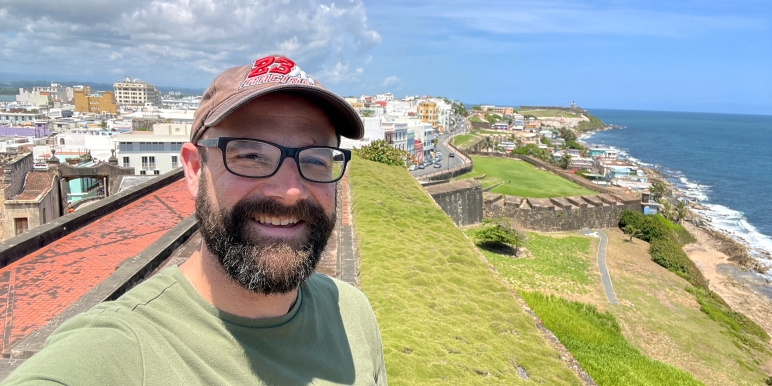
The rest of the Island is just as beautiful
LikeLiked by 1 person